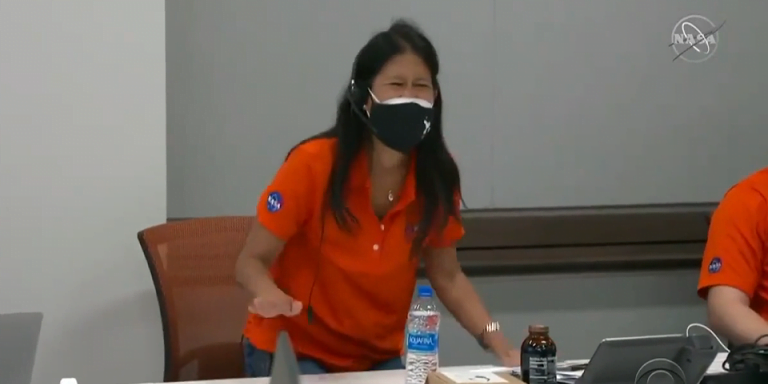Contrary to what sci-fi literature has been telling us for the past several decades, humans have not been able to fly on another planet until yesterday. On Monday, NASA’s Ingenuity Mars Helicopter became the first aircraft in history to make a powered, controlled flight on another planet.
Even if it only lasted 39.1 seconds.
The short event resulted in a joyful celebration among NASA’s Jet Propulsion Laboratory staff in Southern California. Project Manager Mimi Aung was practically dancing in her seat.

Many staff have compared the experiment to the Wright brothers first attempts at flight on Earth.
Flying on another planet poses a set of unique technological complications.
First, the Martian atmosphere is not friendly to flight. While it has only a third of the gravitational pull of our planet, Mars has a very thin atmosphere. It has 1 percent the atmospheric density of Earth, and that means that the rotor blades have very few air molecules to work with when taking off.
Other technical challenges had arisen and were overcome but they delayed the experiment a few days.
Stretching about four feet across, the rotor blades have to spin ten times faster than that of a helicopter on Earth in order to achieve flight.

Second, NASA is still unable to monitor events on Mars in real time.
Because of this, the tissue-box-sized rotorcraft had to muster up the pluck to operate independently.
This brief aerial feat relied on onboard guidance, navigation, and control systems running algorithms developed by the laboratory staff.
And they didn’t know whether or not it would work.
“Our plan is to push the envelope and learn by doing. We take risks that other missions cannot” Aung wrote in a blog post last Saturday, “We also know that if the first attempt does not work on Monday, we can try these commands again.”
But it did work. And Ingenuity sent its flight data to Perseverance, which sent the data and video from both of them back to the laboratory team.

The flight occurred at 3:34 a.m. EDT, which was a little after noon on Mars. And the lab only received the results at 6:46 a.m. EDT.
So it takes about 3 hours for data to travel from Mars to Earth. Okay, that makes sense since there are over 100 million miles between the two planets … But wait …
How is data able to travel between planets at all?
NASA used orbital satellites and the international Deep Space Network to exchange data back and forth between Earth and the Red Planet.
The network consists of three giant radio antennas spaced equidistantly across the Earth in California, Spain, and Australia; these allow NASA to maintain communication with interplanetary missions. As the Earth turns and one station loses a signal, another picks it up.
It’s been going on since the late ’50s.
We don’t really know what the benefits of being able to fly on Mars are, but now scientists are thinking of ways to collect Martian aerial data.
Ingenuity made it to Mars by hitching a ride on the underside of Perseverance.
In what looks like it could have been a presentation at a middle-grade science fair, a video shows Ingenuity awkwardly releasing its spindly legs from the belly of Perseverance in two jerking movements, and casually dropping onto the surface.
NASA has lovingly nicknamed the two machines Percy and Ginny.
Another experiment is scheduled for Ginny two Martian days from now. The Martian day, called a “sol” is 24 hours, 37 minutes, and 22.663 seconds long, so slightly longer than Earth days.
Edited by Melody Friedenthal
MetaStellar reviews editor Amira Loutfi is an author and web designer. She is on a mission to craft excellent fantasy fiction that is inspired by late antiquity Arabia. You can join her monthly newsletter where she shares insider info, wips, and tons of cool stuff.

